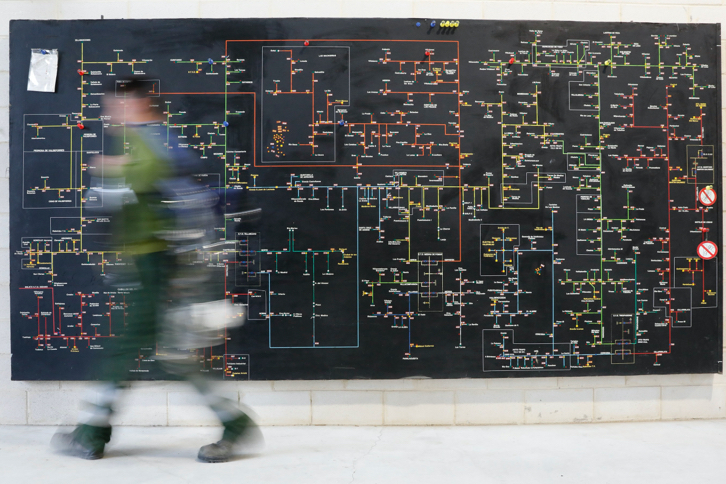News
-
19/08/2021Point of no return or opportunity to consolidate a new path? A few days ago, the sixth report by the United Nations Intergovernmental Panel on Climate Change was published. It was based on 14,000 research articles, involved 234 scientists from 65 countries and incorporated 78,000 comments. Thanks to advances in climate science, the report has found with unprecedented conclusiveness that the planet is crying out for radical changes to ensure its survival and that the causes of climate change, and therefore also the ability to reverse it, lie unequivocally with human activity. The burning of fossil fuels continues to drive temperatures to record highs, pollute the air we breathe and destroy the ecosystems that are essential to the planet’s ecological balance. The authors of the report warn of the direct and indisputable link between the impact of human activity and extreme weather phenomena including droughts, floods, heat waves and fires, while stressing with great clarity that we have never been closer to reaching the point of no return. The picture painted by the study, coupled with the negative inertia generated by decades of inaction, could lead to despondency. But there is every reason to believe that the situation is still reversible. Because, while we now know the diagnosis of the disease that afflicts us, we also have the knowledge, the technology and the skills to put a stop to it today. The main conclusions of the report have been approved by all the governments of the organisation’s member countries and it is a call for urgent action by the scientific community: there is no other way but to drastically accelerate the policies that will lead to carbon neutrality, such as abandoning fossil fuels and a commitment to efficiency, renewable energy and investment in electricity grids and their digitalisation. To achieve this goal, all the non-emitting energy sources will be necessary, without penalising any of them for circumstantial reasons. Just a few decades ago, a statement like this could have meant facing an abyss of uncertainty, but today we know that changing the energy system is perfectly feasible. We can find pioneering universities, research centres and companies that are leading this transformation all over the world. We must therefore take advantage of this wake-up call to act urgently, with greater determination and boldness, to reverse the situation and transform our model into a more resilient and sustainable one. And a more prosperous one for everyone. In recent years, countries have been working to define commitments and frameworks for action that, now more than ever, require rapid implementation and well-targeted stimuli to mobilise different actors to take concrete and consistent action. This requires regulatory regimes that aim at ambitious short, medium- and long-term objectives and are not influenced by the current situations. Almost six years ago, the Paris Agreement, signed by 197 countries, set ambitious targets for tackling the climate emergency: To keep the temperature increase below the 2°C threshold and to make every effort to limit it to no more than 1.5°C. The expert analysis published this week has shown that the 1.5°C target can only be achieved with immediate and high-impact action to reduce emissions. It is time to act. Let me stress, with determination and urgency. The foundations have been laid. The momentum being shown by the EU countries has now been backed up by other world powers, such as the United States and Japan. They have identified the green transition and digitalisation as the cornerstones for the revival and modernisation of our economies. And they have gone further, backing up their decarbonisation strategy with stimulus mechanisms and resources as part of their recovery plans. The commitments made at the EU level -the Green Deal and the European Climate Law, implemented through the Fit for 55, programme- and also at the national level -Spain’s National Integrated Energy and Climate Plan (PNIEC) and the Climate Change and Energy Transition Act- have provided frameworks of opportunity to address these challenges, but they now need to be translated into coherent decisions and swift and effective action. We need to move boldly towards a framework that promotes more investment, resources and action plans in productive and forward-looking sectors; that accelerates the transition to models that are more respectful of the planet’s resources and more aligned with climate ambition, rather than penalising them. Specifically, in the field of energy, we must accelerate the implementation of renewable and competitive production sources and promote greater energy efficiency in consumption. Electrification of end uses such as mobility and home heating systems will be essential for this. In addition, we must allocate more resources to foster innovation, large-scale (pumped hydro) and small-scale (battery) storage, as well as the digitalisation of our electricity grids, which are the backbone of the energy system. However, in order to achieve this, it is also necessary to tackle reforms that go beyond energy regulation, streamlining administrative processes; promoting alliances among companies and between the private and public sectors; undertaking a review of energy taxation under the polluter pays principle; and taking on profound educational reform in order to prepare our young people for the professions of the future as a national priority, which will require encouraging STEM disciplines, especially among women, and promoting entrepreneurship. And this is because the green and circular economy, whose urgent adoption this report calls for, will not only provide us with cleaner and more competitive energy, but can also lead to a new development for sectors such as the automotive industry, manufacturing, construction, capital goods and engineering and a more efficient and sustainable economic model that generates skilled employment and provides greater welfare for society at large. In this regard, a recent report by Analistas Financieros Internacionales (Afi) estimates that for every point of GDP invested in the green economy, three points of positive impact are generated back. Spain is in a privileged position to take advantage of the opportunities that this increased climate ambition represents. We have excellent renewable resources in the form of sun, wind and water, we have excellent human capital, and our companies are also demonstrating their willingness to tackle change. Through commitments, but mainly through actions. At Iberdrola, we have been committed for the past 20 years, with a conviction that is often misunderstood, to the fight against climate change. We are currently implementing an unprecedented investment plan worth €75 billion by 2025, which will total €150 billion over the decade, to triple our renewable capacity worldwide, advance in the deployment and modernisation of our digital grids and innovate in future technologies, such as storage, green hydrogen and smart solutions for mobility and homes. A programme that is driving activity across our value chain when it is needed most, sustaining more than 400,000 jobs around the globe. Every step we take will determine whether or not we reduce the impact of climate change and seize the socio-economic opportunities presented by a green and digital economy, shaping our future and that of generations to come. COP26, the United Nations Climate Change Conference, will take place in Glasgow in the autumn. Let us use this global summit to accelerate existing policies on the one hand, while pushing for greater ambitions on the other. According to the United Nations report, human activity, which has brought us unprecedented levels of development in countless respects, has also led us to this crossroads. I trust that governments, businesses and citizens, collectively, will retain their willingness to find a solution. READ MORE
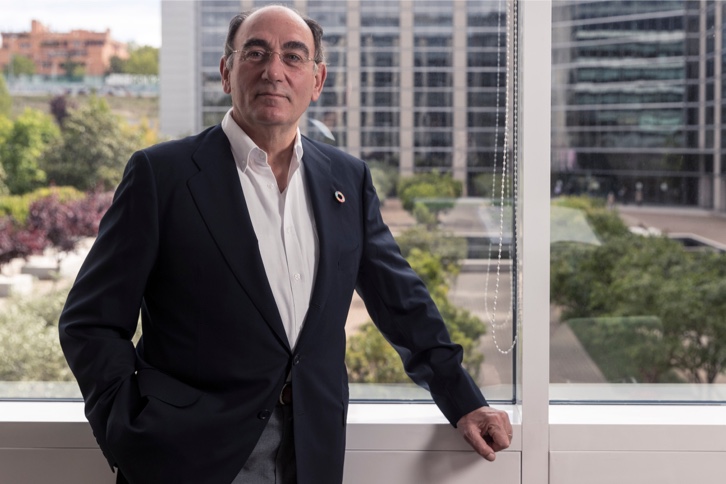
-
17/08/2021Iberdrola commissions the Herrera II wind complex, strengthening its innovation and renewables leadership in Castilla y León Iberdrola has begun commissioning the Herrera II wind complex in Castilla y León. It consists of three farms - La Huesca, Valdesantos and Orbanejoa - with 63 MW of installed capacity and a total of 14 wind turbines. It will generate enough electricity to supply the equivalent of 60,000 households per year and will prevent the release of 50,000 t CO2/year into the atmosphere. Iberdrola has spent €70 million developing the wind complex and stimulating the region's industrial sector. The development employed around 800 people and almost all the on-site civil works were entrusted to local companies. Likewise, in most cases, the components of these wind turbines have been manufactured in Spain: the multipliers in Burgos, the nacelles in Soria, and the turbines in Cantabria. The SG 4.5-145 wind turbines installed at Herrera II, with 70-metre-long blades and a diameter of 145 m – three times larger than that of the first wind turbines – are the most powerful and largest onshore wind turbines in Spain, with a unit power of 4.5 MW, almost seven times greater than that of the first wind turbines installed in our country more than two decades ago. The Orbaneja and La Huesa wind farms have been built in the municipalities of Isar, Las Quintanillas, Rabé de las Calzadas and Estepar: The first of these consists of seven wind turbines, with a total installed capacity of 31.5 MW, while the second has four turbines totalling 18 MW. Valdesantos, on the other hand, has been built in Estepar and has three wind turbines with a total installed capacity of 13.5 MW. Castilla y León, epicentre of renewable developments With this project, the company is ratifying its commitment to Castilla y León and its leadership in renewable energy in the region, where it already operates 5,200 MW – of which 1,600 MW are wind – making this the largest autonomous community in terms of ‘green’ capacity installed by the company. With the commissioning of the Herrera II wind farms, Castilla y León is establishing its position as an important centre for renewable energy developments in the company's investment cycle up to 2025. In the province of Burgos alone, the company has recently built or is developing more than 550 MW in projects such as Ballestas and Casetona (69 MW), Fuenteblanca (10 MW), Buniel (114 MW), Valdemoro (50 MW), Iglesias (94 MW) and Alcocero de Mola (102 MW); as well as the Revilla Vallejera photovoltaic installation (50 MW) and two hybrid photovoltaic plants in the pipeline in Ballestas and Casetona (69 MW). Over the coming years, Iberdrola plans to develop more than 2,400 MW of renewable energy in the region – wind and photovoltaic – for which it will allocate investments in excess of €2bn. According to PNIEC estimates, this volume of resources will stimulate industry and create jobs for 18,000 people. 1,700 MW renewables under construction in Spain The start-up of Herrera II comes on top of other renewable projects launched by the company in the past 12 months, despite the pandemic: the Núñez de Balboa, Campo de Arañuelo I and II photovoltaic plants in Ceclavín, in Extremadura; the Cavar wind farm in Navarre; the solar project in Andévalo (Andalucía); the Barcience photovoltaic project (Castille – La Mancha), the Fuenteblanca wind farm (Castilla y León) and the Azaila photovoltaic plant in Aragón. Iberdrola is building 1,700 MW of renewable capacity in Spain and has a pipeline of more than 17,000 MW on the Iberian Peninsula. In Spain, Iberdrola is the leader in the renewable energy sector with an installed capacity of 17,000 MW, which will increase to 25,000 MW with its investment plan up to 2025. Green investments to promote economic recovery Iberdrola has been leading the energy transition for two decades, acting as a key driving force to transform the industrial fabric and in the green recovery of the economy and employment. To achieve this, the company has launched a major investment plan worth €150bn over the next decade (€75bn by 2025), to triple its renewable capacity to almost 100,000 MW, doubling its network assets and taking advantage of the opportunities offered by the energy revolution the world's leading economies are facing. In Spain, investments until 2025 account for some €14.3bn, €7bn of which will be used to develop renewable projects. Investments worth €120bn over the last twenty years have made Iberdrola a leader in renewable energy with nearly 35,000 MW installed worldwide, a volume that makes its generation fleet one of the cleanest in the energy sector. READ MORE
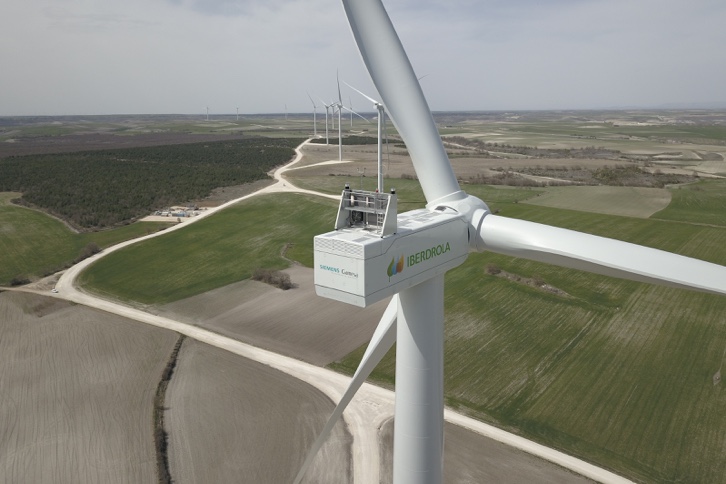
-
06/08/2021Aguilar de Campoo will host the exhibition 'The Prado Museum in the streets'. Aguilar de Campoo welcomes the "Prado in the Streets" exhibition, sponsored by Fundación Iberdrola España and the Prado Museum, in collaboration with the Government of Castilla y León and the village Council. This is the fourth stop for this travelling exhibition that started in Salamanca and made its last stops in Valladolid and León and which will visit the nine regional provinces to raise awareness and promote the collections and historical heritage of the Prado Museum through a variety of educational programmes and cultural activities. The exhibition, which recreates a visit to the museum where the paintings can be viewed in their real dimensions, creating an experience similar to that of standing in front of an authentic work of art, can be visited between 6 August and 6 September in the Paseo de la Cascajera, one of the city's most emblematic spaces. This morning, the Mayoress of Aguilar de Campoo, María José Ortega; the President of Fundación Iberdrola España, Fernando García; the Deputy Minister of Culture of the Regional Government of Castilla y León, Raúl Fernández Sobrino, and the Deputy Director of the Museo Nacional del Prado, Andrés Úbeda, inaugurated this successful cultural initiative that will bring 50 of the most important works from the Museum's Permanent Collection to the people of Aguilar through life-size photographic reproductions. A journey through the history of Western art This large, open-air exhibition, curated by Fernando Pérez Suescun, Head of Educational Content at the Prado Museum, enables visitors to tour the different artistic schools covered by the Prado Museum's permanent collections and learn about the history of Spain, Europe and Western art in general, as painted by the great masters. The Spanish, Italian, Flemish, French, German and Dutch schools are represented through artists from the 12th century to the early 20th century. The exhibition also has bilingual information panels for each work of art, as well as details on the history of the Museum and its collections. The reproductions are shown at a scale of 1:1, however, due to the dimensions of the exhibition stands, this means that, for some of the larger works, only a magnificent and striking part of the work can be seen, with a smaller representation of the entire painting shown in the explanatory panel. In the wake of the enormous success of the exhibition during the celebration of the Museum’s two-hundredth anniversary, “Prado in the Streets" travelled around Castilla-La Mancha until 26 April. In almost two years, thousands of visitors have had the chance to behold some of the wonders the Museum holds thanks to these accurate reproductions, spreading culture across the region with daily visits that never failed to observe the applicable anti-COVID-19 rules. “Prado in the Streets” started its tour of Castilla y León in Salamanca on 30 April, and for the next ten months it will stop off at other cities in the region as well as Salamanca, Valladolid, its last stop, and León, where it opened today, the other cities it will visit include León, Aguilar de Campoo, Burgos, Soria, Segovia, Ávila and Benavente. The Fundación Iberdrola España is a Protector member of the Prado Museum The Fundación Iberdrola España focuses a key part of its activity on caring for and maintaining Spain’s cultural and artistic wealth. The Foundation has been working with the Prado Museum since 2010 by supporting the gallery’s conservation and restoration programmes, as well as offering four annual grants to young restorers. It was also keen to join in the Special Programme for the Prado Museum’s bicentenary celebrations, especially with the launch of this travelling exhibition in Spain. Since 2011, Fundación Iberdrola España has allocated a total of €13 million to art and culture, focusing its resources primarily on the Restoration Programme to support the restoration workshops in leading museums for the conservation of their pictorial and artistic heritage. The Foundation also supports the Lighting Programme, which includes the design, implementation and financing of artistic projects to light iconic buildings and monuments READ MORE
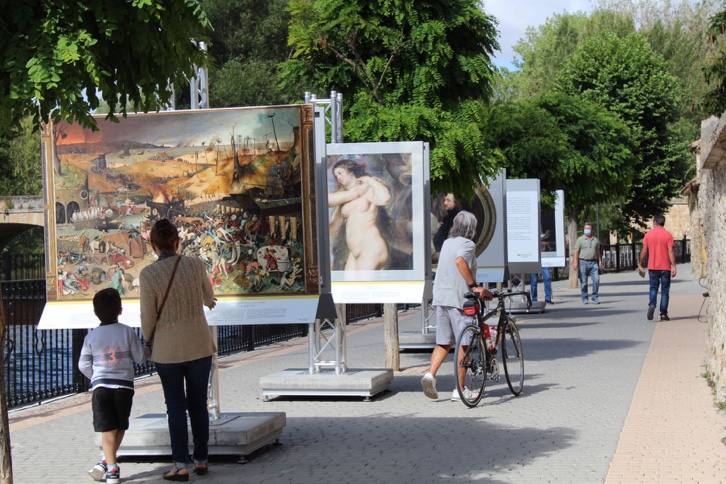
-
04/08/2021Iberdrola leads the Flexener consortium to research new technologies to consolidate a 100 % renewable electricity system Iberdrola will lead the Flexener consortium with the participation of Siemens-Gamesa, Ingeteam R&D Europe, Indar, OSI Digital Grid Solutions, Balantia and Wallbox, whose main objective will be to undertake research into new technologies in areas such as renewable energy generation and its integration into the electricity distribution system (grid), storage systems and flexible demand management to ensure an efficient energy transition. The initiative, which will be carried out between 2021 and 2023 and will have a total budget of 7.6 million euros earmarked entirely for research and development, is part of the Missions programme run by the Centre for the Development of Industrial Technology (CDTI), an agency of the Ministry of Science and Innovation. The project represents a public-private commitment to promoting collaborative R&D&i that accelerates the fulfilment of objectives relating to the energy transition. It also highlights the need to increase investment in electricity grids above the levels seen over recent decades to enable a green recovery. Research into grid digitalisation will allow the development of increasingly bi-directional system¬s to transform the customer’s relationship with energy by involving them in consumption that is more autonomous and responsible; more robust, by ensuring the incorporation of more renewables; and more flexi¬ble, because the grids incorporate multiple generation points close to the places of consumption. The project represents an opportunity to promote solutions in areas such as electric vehicles and self-consumption, which are set to play a decisive role in the consolidation of new development models such as smart cities. Investments to accelerate decarbonisation objectives After investing 120 billion euros over the last two decades, Iberdrola is a global energy leader with an installed renewable capacity of more than 35,000 MW, making its generation fleet one of the cleanest in the energy sector. Aware of the potential role electricity grids can play in the transition, Iberdrola has invested 2 billion euros in recent years to digitise 11 million me¬ters in Spain and it continues this process in other markets to further promote smart grids and ensure the mass incorporation of renewables. By 2025, the company will have installed more than 21 million smart meters in the markets in which it operates. Iberdrola is developing a historic investment plan worth 150 billion euros by 2030, which will include 75 billion euros by 2025, through which it will triple its renewable capacity and double its network assets and take advantage of the opportunities presented by the energy revolution facing the world’s leading economies. In Spain, these investments amount to around 14.3 billion euros by 2025. READ MORE
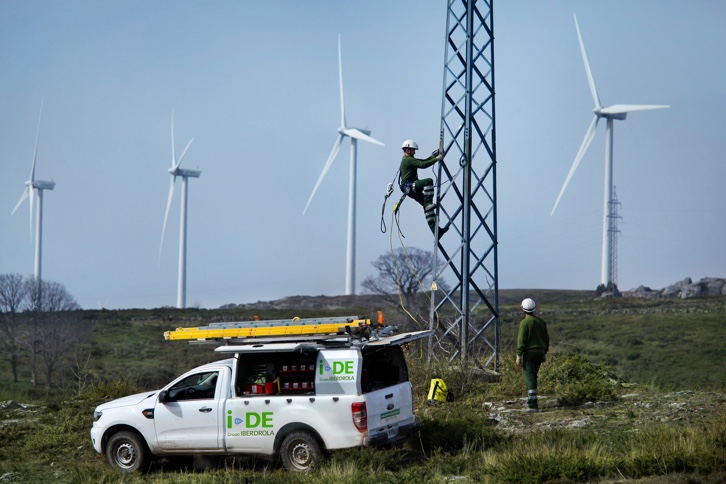
-
01/08/2021Iberdrola signs the first energy sector loan in Europe linked to water consumption Iberdrola has taken out the first energy sector loan in Europe linked to water consumption. The five-year loan has been granted by Intesa Sanpaolo in the sum of 250 million euros. The operation includes an incentive linked to achieving circular economy objectives: Iberdrola has undertaken to gradually reduce its water consumption, which must remain below a threshold of 420 m3/GWh by 2025. If it does this, Intesa Sanpaolo will apply a discount to the loan. If not, the cost of the loan will increase. The circular loan granted to Iberdrola is the largest operation carried out in Spain in the framework of the Circular Economy programme, which is worth €6 billion, launched by Intesa Sanpaolo in its Business Plan 2018-2021. Iberdrola reaffirms its global leadership in green finance Iberdrola is an established global leader in sustainable financing, it was the first Spanish company in the world to issue green bonds and is the leading company in the world in this area. The group currently has green or sustainability-linked financing for an amount in excess of €32.4 billion, of which more than €15.6 billion correspond to green bonds. It is still the world's number one issuer of green bonds. The projects to which the resources obtained from these placements are allocated are aligned with the United Nations Sustainable Development Goals (SDGs), towards which Iberdrola is working: Number 7, affordable, clean energy, and number 13, climate action. Iberdrola's strategy is to increase the percentage of green and sustainable products in its financing structure, to reach 63 % of the total by 2025. In 2021, 100 % of its credit lines and 70 % of its hybrid bonds will comply with these criteria. This approach to financing is in line with Iberdrola's growth plan, which envisages investments of €75 billion by 2025, aimed at doubling its renewable capacity to 60,000 MW and raising the value of its network assets to €47 billion. A plan that aims to promote the decarbonisation of the economy and, with it, economic recovery and employment, and which foresees investments of €150 billion by 2030, with which the group will reach an installed capacity of close to 100,000 MW. Intesa Sanpaolo is one of the world's most sustainable banks and is included in the main sustainability indexes. Intesa Sanpaolo’s strategic support of the circular economy is consistent with its objective of promoting sustainable economic development in the long run. Intesa Sanpaolo is a strategic partner of the Ellen MacArthur Foundation, the main organisation in the world that promotes the circular economy, with which it has been collaborating since 2016. READ MORE
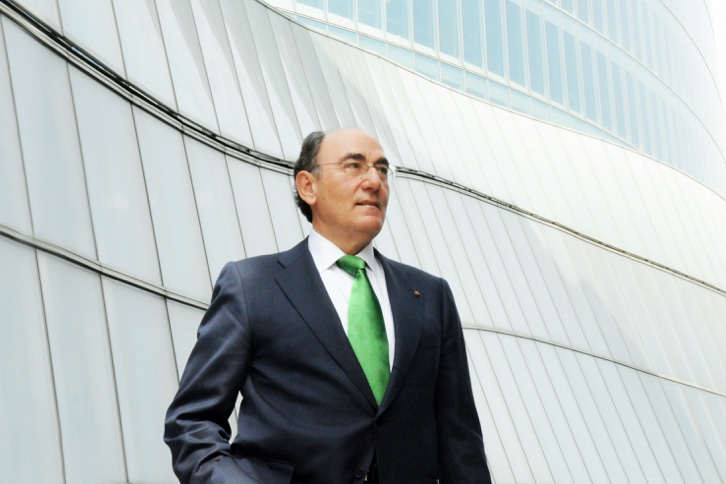
-
30/07/2021Iberdrola, Disfrimur and Ingeteam will develop the first Mediterranean Corridor for 100 % electric heavy transport Iberdrola is leading a project to develop the first Mediterranean Corridor for 100 % electric heavy road transport in collaboration with transport and logistics company Disfrimur and power electronics specialists, Ingeteam. The initiative includes three areas of action: the acquisition of 100% electric heavy goods vehicles of up to 40 tonnes; the development of public charging infrastructure, installing charging points at Disfrimur's logistics bases — also open to public use — and at other stations equipped with very high power chargers for intercity journeys; as well as the deployment of a smart grid to service these chargers, ensuring maximum efficiency. The project would complete the first Mediterranean Corridor for 100 % electric heavy transport, which would run through the Region of Murcia and the Valencian Community, although the developers intend to extend it to all the other national freight corridors in the coming years. The electric charging stations would be installed in Disfrimur's logistics centres in Sangonera La Seca (Murcia) and San Isidro (Alicante). Subsequently, the first electric Mediterranean Corridor would be further developed with chargers along the route and on other Disfrimur logistics sites, covering the entire Benicarló (Castellón) - Puerto Lumbreras (Murcia) route. A total of more than 450 km of emission-free freight transport routes. The initiative is also pioneering the development and use of very high-powered electric chargers, up to 1 MW, a technology currently undergoing standardisation. The development of this charging point will follow the future Megawatt Charging System (MCS) standard for rapid charging of heavy vehicles like lorries and buses. It will allow vehicles with 200-600 kWh batteries to be charged in just 20-30 minutes. This will mean increasing the charging voltage to up to 1,500 V with a current of more than 1,000 A. This type of infrastructure will make it possible to charge vehicles at high speeds along the route, essential for electrifying the long-distance transport of goods and for 24/7 goods distribution services. The initiative - which has been submitted to the Next Generation EU programme- is a benchmark in the use of very high-powered chargers, which will revolutionise road freight transport in the short and medium term. Forming alliances and sharing capacities To undertake this project, Iberdrola has entered into alliances that allow it to add capacities in the field of transport, with Disfrimur, and power electronics, with Ingeteam, the company in charge of manufacturing the new high-power charger. The Transport Environment& Institution will collaborate with analysis and technical validation of this pioneering proposal. Iberdrola will develop new smart solutions for electric mobility services for heavy road transport, including this project to install ultra-fast chargers to serve electric trucks in the corridor, as well as their operation and maintenance. Meanwhile, Ingeteam, will be responsible for manufacturing and supplying this type of high-power charger. The initiative will also entail the development of a smart grid infrastructure to service these chargers, ensuring maximum efficiency, which will be provided by Iberdrola's distribution company, i-DE. The distribution company will contribute to these projects as an energy project facilitator, advising on aspects including the optimal selection of infrastructure locations. Investments to speed up decarbonisation and economic reactivation Iberdrola remains committed to the electrification of transport in its strategy for the transition to a decarbonised economy and sees this as a key lever for reducing emissions and pollution, as well as for the green recovery of the economy and employment. The company is rolling out a sustainable mobility plan, which envisages the installation in the coming years of around 150,000 charging points in homes and businesses, as well as on urban roads, in cities and on the main motorways. Iberdrola has been leading the energy transition for two decades, acting as a key driving force to transform the industrial fabric and in the green recovery of the economy and employment. To achieve this, the company has launched a historic investment plan worth €150bn over the next decade (€75bn by 2025), to triple its renewable capacity to almost 100,000 MW, doubling its network assets and taking advantage of the opportunities offered by the energy revolution the world's leading economies are facing. After investing 120 billion euros over the last twenty years, Iberdrola is a leader in renewable energy with 35,000 MW installed worldwide; a volume that makes its generation park one of the cleanest in the energy sector. The strategy of investing in clean energy and grids will enable Iberdrola to become a carbon neutral company in Europe by 2030. READ MORE

-
28/07/2021Iberdrola commissions its first photovoltaic plant in Castile-La Mancha Iberdrola is moving forward with its renewable strategy in Castile-La Mancha by commissioning its first photovoltaic plant in this autonomous region. The Barcience plant in Bargas, Toledo, has 144,900 modules and an installed power of 50 MW. The plant will produce clean energy for the equivalent of 24,700 homes/year and will prevent the emission of 15,000 tons of CO2 per year into the atmosphere. The project included numerous national suppliers, such as Arteche, FCC-Abengoa, Mesa, Siemsa, Garoc and Reneergy and 250 workers were involved in the construction stage. The construction process had to deal with harsh conditions, such as Storm Filomena which swept through the centre of the country, however, everything was finished on time. Freezing temperatures formed a layer of ice at the highest part of the solar farm, covering both the land and the infrastructure, and it took two rainstorms to melt the ice. Ramping up investments in renewables in the region Iberdrola is steadfast in its commitment to developing renewable energies in Castile-La Mancha, a region where it already operates 2,386 MW, mainly wind power, ranking it third among the list of regions with the group's largest 'green' capacity in Spain. As well as Barcience, the company is building the Romeral (50 MW) photovoltaic plant in Cuenca between the towns of Alarcón and Olmedilla de Alarcón, with a total of 144,900 modules. This plant will produce clean energy for the equivalent of 24,500 homes/year and will prevent the emission of 15,000 tons of CO2 per year into the atmosphere. It is also making progress on the Olmedilla photovoltaic plant (50 MW) in the Cuenca municipalities of Valdeverdejo, Alarcón and Olmedilla de Alarcón, which will produce clean energy for the equivalent of more than 30,000 homes/year and will prevent the emission of 18,000 tonnes of CO2 /year. In Castilla-La Mancha, Iberdrola is developing another photovoltaic project in Ciudad Real, in Puertollano, which will form part of and supply clean energy to the largest green hydrogen production plant for industrial use in Europe. With an investment of 150 million euros, Puertollano II will become a testbed for innovative technologies: Alongside the 100 MW photovoltaic plant, a battery storage system and a plant for the production of green hydrogen by electrolysis from 100% renewable sources will be installed. Its development and construction will create 700 jobs and, once operational, will prevent 39,000 tons of CO2/year. In Spain, Iberdrola is currently building 1,200 MW of renewable generation facilities and has a project portfolio of more than 17,000 MW in this Iberian region. Accelerated investments to contribute towards the green recovery Iberdrola has been leading the energy transition for two decades, acting as a key driving force to transform the industrial fabric and in the green recovery of the economy and employment. The company has thus launched a historic investment plan worth 150 billion euros over the next decade, 75 billion euros by 2025, to triple its renewable capacity and double network assets and take advantage of the opportunities offered by the energy revolution that the world's leading economies are facing. In Spain, investments to 2025 amount to 14.3 billion euros, mainly for the roll out of an ambitious plan for renewables and smart grids. In Spain, it is the leader in the renewable energies sector with an installed capacity of 17,400 MW, which will increase to 25,000 MW with its investment plan up to 2025. After investing 120 billion euros over the last twenty years, Iberdrola is a leader in renewable energy with 35,000 MW installed worldwide; a volume that makes its generation park one of the cleanest in the energy sector. READ MORE

-
27/07/2021Iberdrola and EIB sign a new €550 million green loan to boost smart grids in Spain The European Investment Bank (EIB) and Iberdrola have signed an agreement to support the development, modernisation and digitalisation of the company’s electricity distribution networks in several Spanish regions. To this end, they have signed a €550 million green loan enabling the company to boost smart grids in Spain, contributing to greater electrification, in line with the of the Spanish and European climate neutrality target for 2050. This agreement contributes to the development of the ambitious network investment plan that i-DE — Iberdrola's Spanish distributor — will develop between 2021 and 2023 and that amounts to €1.472 billion. Therefore, the EIB support will allow Iberdrola to improve the reliability, efficiency and security of the distribution of a renewable and sustainable energy supply. The implementation of this investment plan of i-DE will drive the green recovery of the economy and employment, making it possible for around 10 000 jobs per year to be maintained in Spain during the implementation period, according to EIB estimates. In addition, a significant share of investments (68%) will be made in cohesion regions, in a country with unemployment rates significantly higher than the EU average. This financing will contribute to achieving a threefold objective: meeting growth in demand (connected to electric transport and air conditioning) and production (more renewable energy and distributed generation); improving the resilience of the electricity grid to meet the challenges of climate change; and promoting the modernisation of processes related to electricity distribution infrastructure, while also taking sustainability criteria into account. The investment programme covered by this operation contributes to the Bank’s sustainable energy public policy objective, in line with the criteria of the Climate Bank Roadmap . The investments will also support increased electrification in the heating and mobility sectors, in line with Spain’s National Energy and Climate Plan objectives. The EU bank is assisting this operation via a green loan, the features of which are fully in line with the requirements set out in its climate awareness bonds programme. As a result, it is likely to be allocated to its portfolio of loan operations financed via the issuance of these bonds. READ MORE
